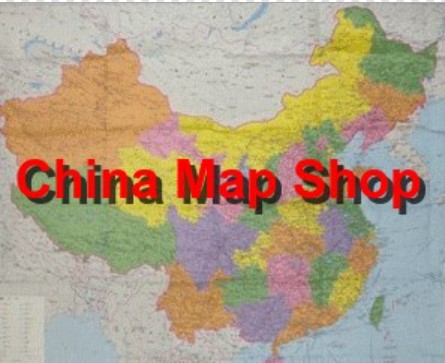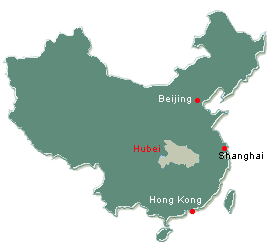|
|
|
Geography of Hubei Province |
|
Situated north the middle reaches of the Changjiang (Yangtze)
River, Hubei, a
province with numerous rivers and lakes, has been called the "land of
thousand lakes". The Changjiang (Yangtze) River cuts through the Wushan
Mountain as it flow eastwards, forming the famous gorges linking Hubei
with the neighboring
Sichuan. The Province has
an area of 180 thousand square kilometers and a population
of 58.44 million (by 2022) comprising
the Han,
Tujia,
Hui,
Manchu,
Miao and
Mongolian nationalities. The
capital city is
Wuhan.
|
|
|
Climate of Hubei Province |
Hubei has a sub-tropical, humid and monsoon climate. It has
distinctive for seasons with a changeable spring, a humid and hot
summer, a clear and peasant autumn and a dry and cold winter. Its annual
mean temperature ranges from 13ºC
to 18ºC
(55.4 ºF to 64.4 ºF)
with lowest monthly mean in January being
1C to 6C and highest monthly in July being 24ºC
to 30ºC (75.2 ºF
to 86 ºF). Its
annual precipitation averages is between 750-1,500mm, which is
concentrated in summer. |
|
|
Brief History of Hubei Province |
|
Hubei has a long history and magnificent culture. Painted pottery dating
back to Neolithic period was excavated at Qujialing of Jingshan county
in 1955, which was hence named th Qujialing culture. Five kilometers
north of Jiangling County town lies the remains of Ji'nan, the capital
of Chu in both the Spring and Autumn and Warring States periods.
For
almost four hundred years from 689 to 278 B.C, a total of twenty kings
made Ji'nan their capital, which was not only the political, economic
and cultural centre of the state of Chu but also the largest city in
south of China. Sun Quan, King of the Kingdom of Wu in the three
Kingdoms Period, built fortifications in Wuhan, then called Jiangxia. It
was not until the Qing Dynasty (1644-1911) that Hubei was made a province.
|
|
|
Hubei Local Products |
|
Hubei abounds in fish, lotus seeds and roots, water caltrop, water fowl
and pearls, and boasts a highly developed fishery and aquatic farming
operation. The Wuchang black bream is considered a delicacy throughout
the country. Fir of Shennongjia, China's dove tree of Gongtong and met
sequoia in southwest Hubei are three species unique in the world.
Other
local products are Tung oil of Laifeng, lacquer of Lichuan and Enshi,
silver fungus of Baokang and Fangxian, osmanthus flowers of Bodun,
Xianning, Yihong black tea of Yichang, brick tea of Puqi and Fuling in
eastern Hubei. There are many traditional handicraft items in this
province. Wuhan's jade carving, bamboo ware and bassinets, Guangji's
bamboo furniture, Jiangling's Jing satin, Yicheng's bamboo mates,
Macheng's pottery and Mianyang's straw woven items are the most famous.
|
|
|
|
|
Places of Interests and Tourist Attractions: Hubei |
|
HUANGHELOU (Yellow
Crane Tower)
Located
on the south bank of the Yangzi River, the Yellow Crane Tower is perhaps
China's most badly treated historical
monument. It is said to have been built in 333 during the Three
Kingdoms period. In the centuries that followed,
it was destroyed and rebuilt several times. In
history, the tower inspired many poets and artists.
It was last rebuilt in 1983.
WUDANG MOUNTAINS
A trip to Wudan Mountains is a very worthwhile outing from Wuhan.
Located in western Hubei, Wudang is an ancient sacred Taoist shrine.
The first Taoist temple
there, the "Five Dragon Temple, " was built 1,300 years ago in
the Tang Dynasty. In the 15th century, the Ming court sent 300,000
soldiers and workers there to build 160 monasteries, temples, pavilions
and other structures. It took more than 10 years to complete the
construction. It then became
a major center of Taoism. Although many of the old structures deteriorated
in the ensuing
centuries, there are still many well-preserved temples.
The mountains are also
linked with a
school of martial arts. It is said that Taiji boxing was invented
there by a Taoist priest.
|
|
|
Hubei
Related Article and Report Links |
|
|
|
| |
|
|
|
|
Hubei Useful Links and Sites |
|
|
|
|
|
|
ADVERTISEMENT
 |
|
|



